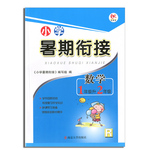题目内容
The following card includes a brief summary and a short assessment of a research paper. It can provide a guide for further reading on the topic.
Trevor, C. O., Lansford, B. and Black, J. W., 2004, "Employeeturnover (人事变更) and job performance: monitoring the influences of salary growth and promotion", Journal of Armchair Psychology, vol. 113, no.1, pp. 56-64.
In this article Trevor et al. review the influences of pay and job opportunities in respect of job performance, turnover rates and employees' job attitude. The authors use data gained through organizational surveys of blue-chip companies in Vancouver, Canada to try to identify the main cause of employee turnover and whether it is linked to salary growth. Their research focuses on assessing a range of pay structures such as pay for performance and organizational reward plans. The article is useful as Trevor et al. suggest that there are numerous reasons for employee turnover and a variety of differences in employees' job attitude and performance. The main limitation of the article is that the survey sample was restricted to mid-level management, thus the authors indicate that further, more extensive research needs to be undertaken to develop a more in-depth understanding of employee turnover and job performance. As this article was published in a professional journal, the findings can be considered reliable. It will be useful additional information for the research on pay structures.
1. The research paper published is primarily concerned with
A. the way of preventing employee turnover
B. methods of improving employee performance
C. factors affecting employee turnover and performance
D. pay structures based on employee performance
2. As is mentioned in the card, the limitation of the research paper mainly lies in that .
A. the data analysis is hardly reliable
B. the research sample is not wide enough
C. the findings are of no practical value
D. the research method is out-of-date
3. Who might be most interested in this piece of information?
A. Job hunters.
B. Employees in blue-chip companies.
C. Mid-level managers.
D. Researchers on employee turnover.
【小题1】C
【小题2】B
【小题3】D
解析

 学而优暑期衔接南京大学出版社系列答案
学而优暑期衔接南京大学出版社系列答案 Happy holiday欢乐假期暑假作业广东人民出版社系列答案
Happy holiday欢乐假期暑假作业广东人民出版社系列答案